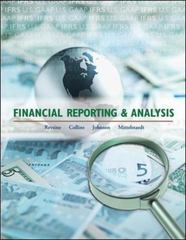Question
QUESTION: Halloween costumes are becoming more popular as we are getting closer to Halloween. The domestic demand and supply for Halloween costumes in Canada are
QUESTION: Halloween costumes are becoming more popular as we are getting closer to Halloween. The domestic demand and supply for Halloween costumes in Canada are given by the following equations, where Q is the quantity of Halloween costumes and P is the price of Halloween costumes: P = 80 - (1/500)QD and P = 20 + (1/1000)QS
Initial Equilibrium
a. Determine the equilibrium price and quantity for the domestic market of Canada.
b. Draw a graph (Diagram1) representing the initial equilibrium for Halloween costumes with accurate labels and show the area for consumer surplus (CS) and producer surplus (PS).
Price Floor
c. Suppose now the government decides to intervene the market with a price floor of $50, determine quantity demanded and quantity supplied. Is this a surplus or a shortage?
d. Draw a graph (Diagram 2) representing the market for Halloween costumes at a price floor of $50 with accurate labels and show the area for consumer surplus (CS), producer surplus (PS), and deadweight loss (DWL).
Price Ceiling
e. Suppose now the government decides to intervene the market with a price ceiling of $25, determine quantity demanded and quantity supplied. Is this a surplus or a shortage?
f. Draw a graph (Diagram 3) representing the market for Halloween costumes at a price ceiling of $25 with accurate labels and show the area for consumer surplus (CS), producer surplus (PS), and deadweight loss (DWL).
Taxation
g. Suppose now the government decides to intervene the market with a tax on producers of $4, determine the price for the consumer, the price for the producer, and the quantity produced with the tax.
h. Draw a graph (Diagram 4) representing the market for Halloween costumes with a tax on producers of $4. Accurately label and show the area for consumers (CS), producer surplus (PS), deadweight loss (DWL), and government revenue (GR).
i. Calculate the consumer surplus (CS), producer surplus (PS), total surplus (TS), deadweight loss (DWL), and government revenue (GR).
Subsidy
j. Suppose now the government decides to intervene the market with a subsidy of $4, determine the price for the consumer, the price for the producer, and the quantity produced with the subsidy.
k. Draw a graph (Diagram 5) representing the market for Halloween costumes with a subsidy of $4. Accurately label and show the area for consumers (CS), producer surplus (PS), deadweight loss (DWL), and government revenue (GR).
l. Calculate the consumer surplus (CS), producer surplus (PS), total surplus (TS), deadweight loss (DWL), and government revenue (GR).
Quota
m. Suppose now the government decides to intervene the market with a quota of 10000 units, determine the price for the consumer, the price for the producer, and the quantity produced with the quota.
n. Draw a graph (Diagram 6) representing the market for Halloween costumes with a quota of 10000 units. Accurately label and show the area for consumers (CS), producer surplus (PS), deadweight loss (DWL), and government revenue (GR).
o. Calculate the consumer surplus (CS), producer surplus (PS), total surplus (TS), deadweight loss (DWL), and government revenue (GR).
Miscellaneous
p. Which of the scenarios - no government intervention, price floor, price ceiling, tax, subsidy, or quota - do the consumers, the producers, and the government each prefer the most?
q. In which of the scenarios is the deadweight loss the largest? Why?
r. True or false, no explanation required: If the inverse market supply of Halloween costumes becomes less elastic, then when there are no government interventions, consumer will benefit.
Step by Step Solution
There are 3 Steps involved in it
Step: 1

Get Instant Access to Expert-Tailored Solutions
See step-by-step solutions with expert insights and AI powered tools for academic success
Step: 2

Step: 3

Ace Your Homework with AI
Get the answers you need in no time with our AI-driven, step-by-step assistance
Get Started


